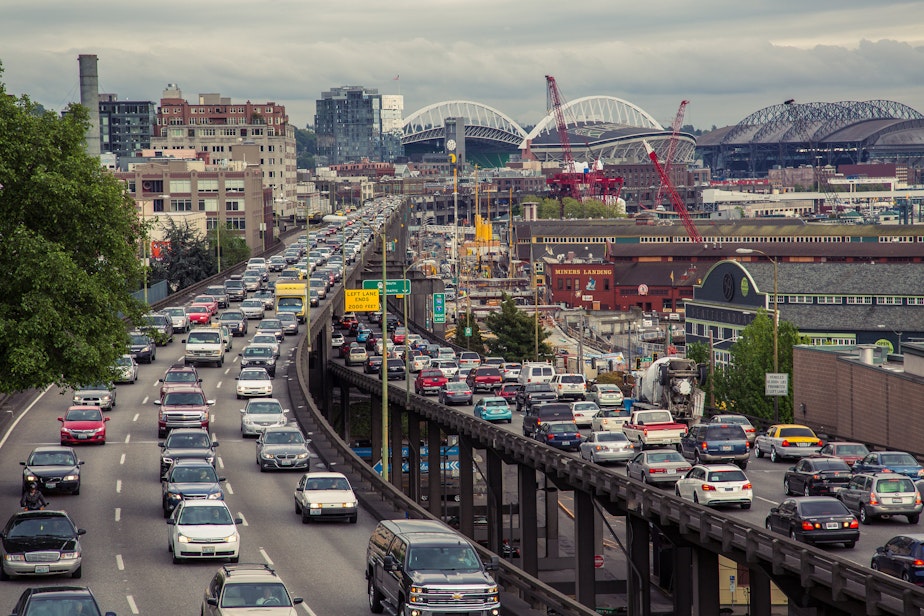Seattle boomed but still took cars off the road

Traffic on Seattle's Alaskan Way Viaduct, in bygone days.
More transit riders. Fewer bicyclists. A similar number of cars, even as Seattle's population rose.
These are some highlights in the annual traffic report from the city's Department of Transportation.
SDOT releases this report annually; so this is the traffic data collected in 2017.
Here are some key takeaways:
- Overall, slightly fewer people drove a car in 2017 than in 2016. The trend line over the past 10 years is pretty flat, but that's an accomplishment, considering how much population the city has gained — another 9,000 last year.
- Total car crashes went down almost 2 percent.
- Transit ridership increased, continuing a trend since 2006. Last year, there were more than 170 million trips.
- Fewer people drove alone to work, but 51 percent of Seattle commuters still drive solo. Compare that to 25 percent who used transit in 2017. Those percentages have been fairly flat over the past five years.
- SDOT counted slightly fewer bicyclists, following a trend over the past few years. Bicyclists as a portion of commuters decreased from 3.5 percent in 2016 to 2.8 percent in 2017. SDOT says weather is a big factor for cyclists and last year was especially rainy.
- More people are walking in the city. But the proportion of commuters who walked in 2017 was about the same as in 2016.
All these numbers are important, given the city's attempts to live up to its climate promises.
Vehicle emissions contribute greatly to the city's carbon footprint, and various mayors have tried to rein in pollution from cars and trucks.
That has seemed an impossibility, given Seattle's rising population and what can seem like non-stop gridlock. But the new numbers indicate that the city is at least not going backward.




